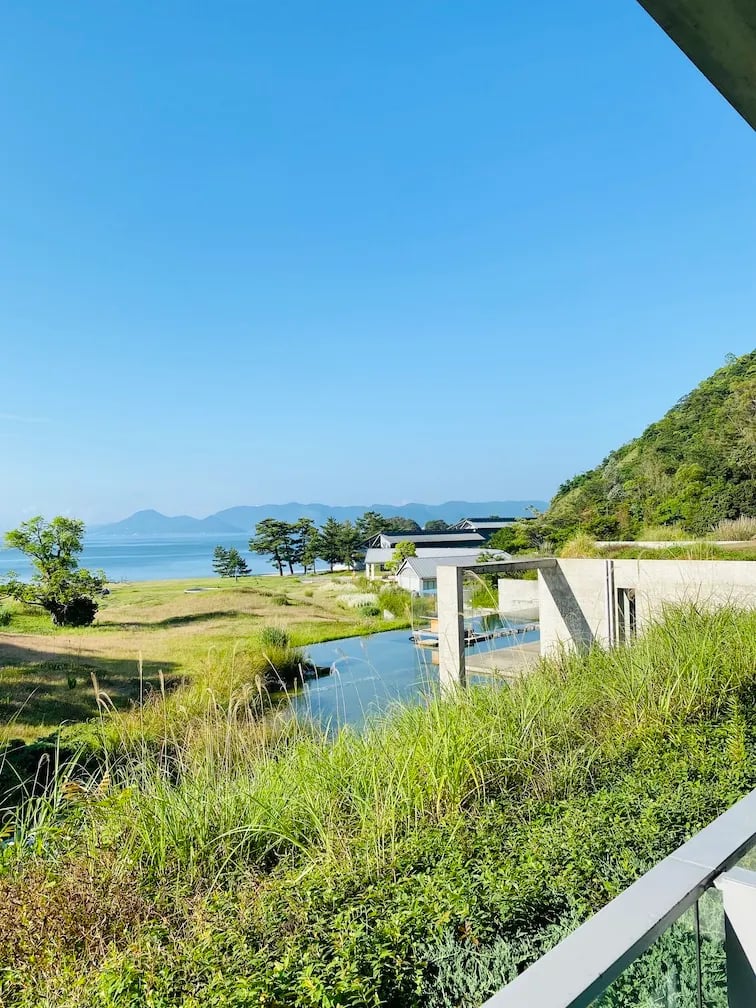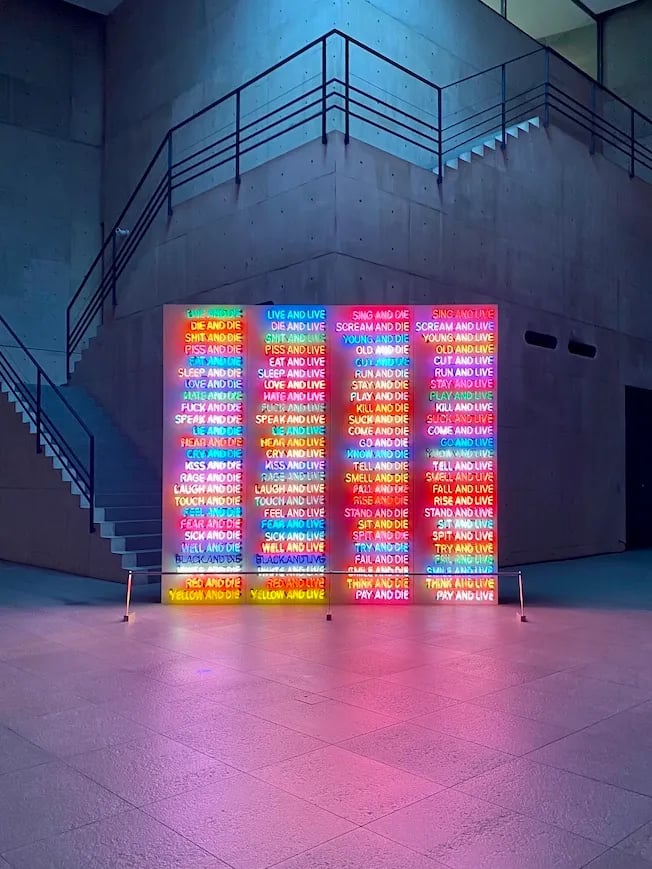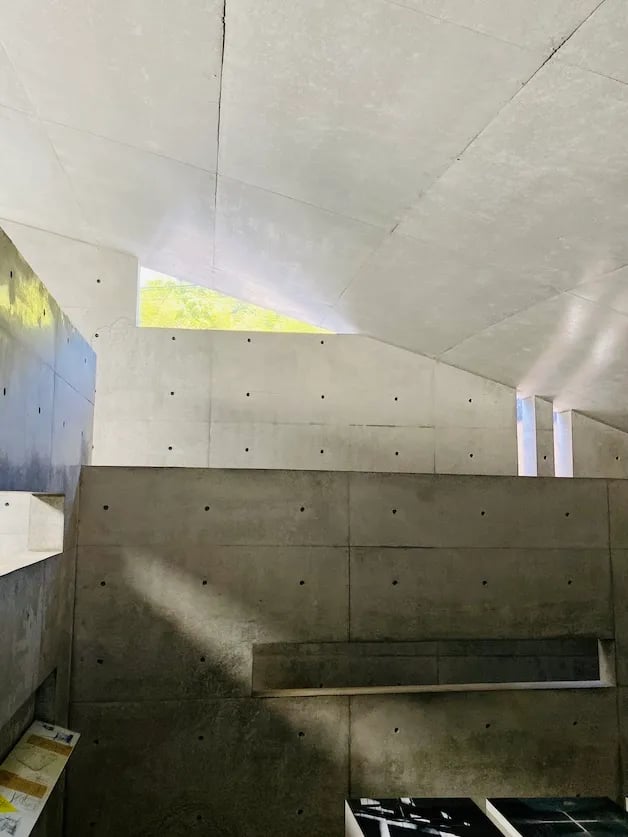a month of art museums in Japan
aka. June 2023 when I visited 15 art museums and took 588 photos and pages of notes (buckle up lol it’s a long one)
I graduated this past May with a Master’s degree in art+technology (the actual degree is called “M.P.S. Interactive Telecommunications Program” but no one outside of the program knows what that is lol).
It’s been such an intense program that I I hadn’t traveled/vacationed for two years (+ the 1.5 years of the pandemic before that), which meant I had 3.5 years of pent-up travel in me and I booked a month-long trip to Asia—three weeks in Japan and one week in Beijing with family—for as soon as I graduated.
And one April weekend I was so exhausted from working on my thesis that I procrastinated the whole weekend by planning a trip to Naoshima, Japan’s art island. It was a perfect amalgamation of Nicole raving about it years ago, then Riho mentioning I should go on this particular trip, and then a few days later seeing Alice posting about it on Instagram. If you’re interested, here’s my spreadsheet for the 2.5 days:
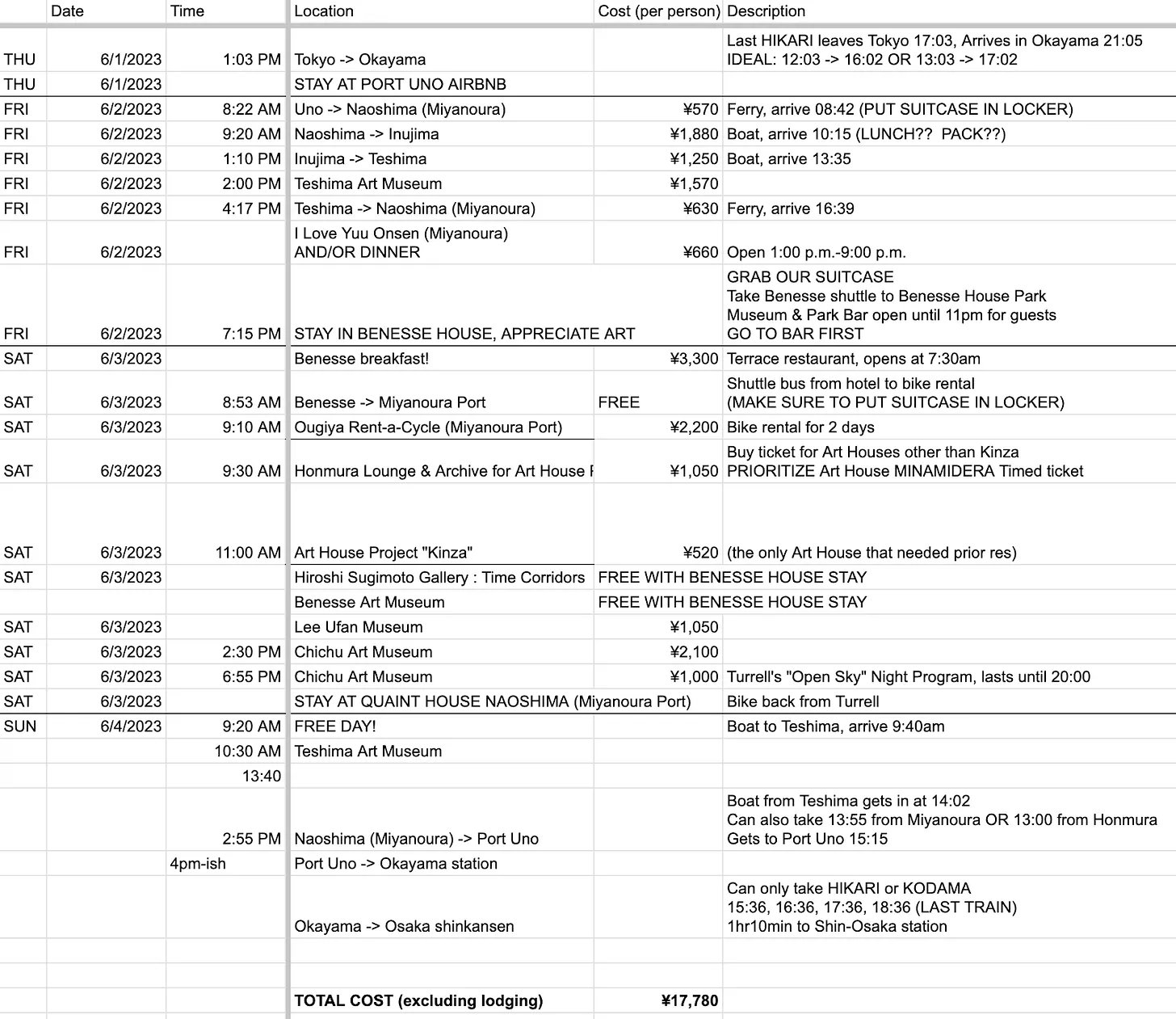
It took me a whole Saturday to plan because it turns out that there are actually three art islands (Naoshima, Teshima, Inujima), the ferries between them are extremely infrequent, a lot of places are closed on random days of week, and most places require advance timed reservations. I consulted both Alice and Nicole the entire day and came up with—what I thought—was the perfect plan. All I had left to do was (finish thesis, give a keynote at Outlier, graduate lol) impatiently wait for June 1st to come.
And then it was June 1st and we were on the bullet train to Okayama, when suddenly I got a cancellation for my bike rental at Teshima the following day. Turns out, there was a typhoon hitting the next day and we had to scramble to redo all of my planning (shout-out to the best Airbnb host that spent an hour replanning everything with us!) 😂
Which I took to be the Universe’s way of telling me to slow the f**k down lol bc our original schedule had us running around like crazy, trying to fit everything in at the cost of being able to take our time. It was a really nice reminder after a whole semester going non-stop, and it set the tone for the rest of the trip to slow down and enjoy and introspect (and keep looking at art).
And I’m so glad I did—I felt like I was finding myself over and over.
(wow can I get cornier.)
The Art Islands
Naoshima was so lush with the exact balance of nature I love: full of blue skies and blue oceans and greenery. But then the greenery would be cut with Tadao Ando’s concrete museums and buildings, that somehow felt like they belonged in the landscape. And when I stood within the museum, the architecture seemed to embrace the art pieces, and vice versa. And I loved all the long, narrow slits in the building, windows that gave just a hint of the other side. And the way that they let light into the space was *chef’s kiss*. It was the first time I appreciated the architecture as much as the art.
But most of all, I felt like I was seeing pieces of my thesis throughout the whole island. I finished my grad program realizing that I loved working with motors, water, and air as my mediums. The island taught me that I love water and glass because of the ways that they reflect and refract light. (Why do I love the way light refracts and casts shadows so much? That I still haven’t quite figured out.) And that, no matter how much I try to artificially recreate wind indoors, there is nothing like placing a piece in nature and watching the water ripple with the wind, hearing the leaves rustle all around, smelling sea salt on the air. It made me curious to experiment and explore outside for my own work—how do I place a piece outdoors, how would it interact with the environment, how would its meaning change?
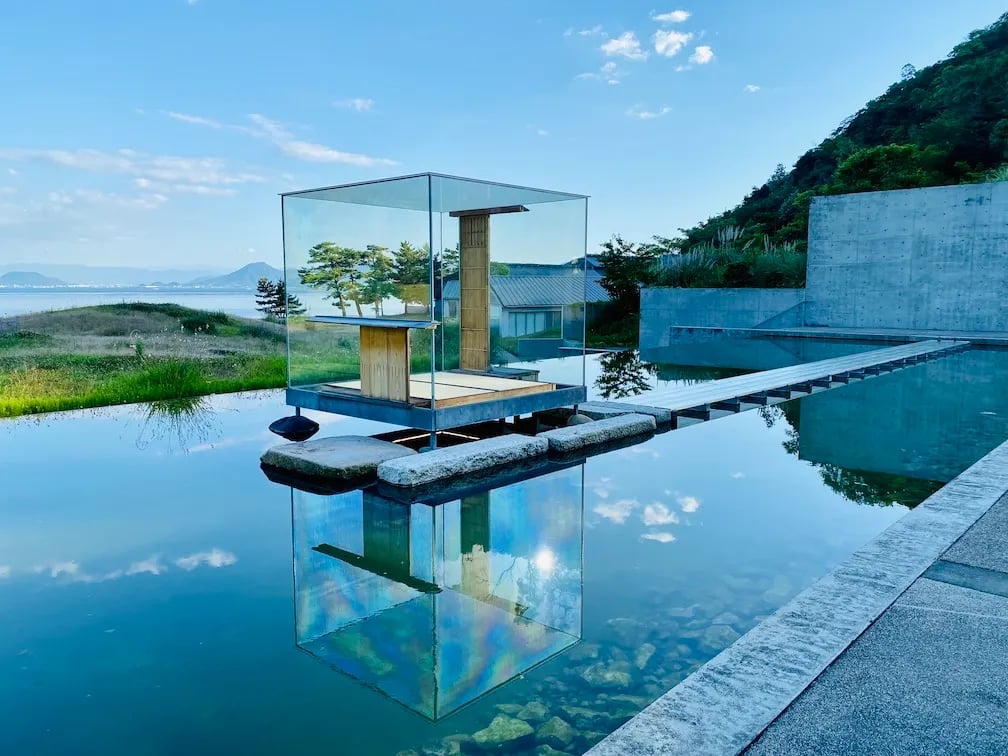
Then there was Teshima island. I almost skipped it in my planning but Nicole insisted that I go. And when I got there, I immediately saw why. The island was (dare I say) even more gorgeous than Naoshima with dramatic cliffs leading to ocean views and tiers of rice paddies. And then the museum—I won’t say much about it because I don’t want to spoil the experience. All I want to say is, it is perhaps the most perfect example of a site-specific piece I’ve ever encountered. It was perfectly in conversation with the island it was on, and took advantage of its environment to complete the art. And the way that it so delicately, beautifully combined all the elements that I love—I welled up with emotion when I got inside.
(I should give a disclaimer that I’ve heard Teshima Art Museum can be quite polarizing, that some people really love it and others just really don’t care for it. It’s like any piece of art, it really depends on your life experiences and aesthetic preferences. I adored it to pieces.)
The notes I took
Earlier this year I got in the habit of jotting down notes while at an art museum. For me, art museums and galleries are almost always a solitary activity, because I tend to go through them very slowly and when I see a piece I really like, I might stop in front of it for minutes. I’ll think about why I like it, and once I figure out why, I’ll note it on my phone. Or sometimes the piece will trigger some deep internal reflection, especially about my own work, and I’ll jot those down too.
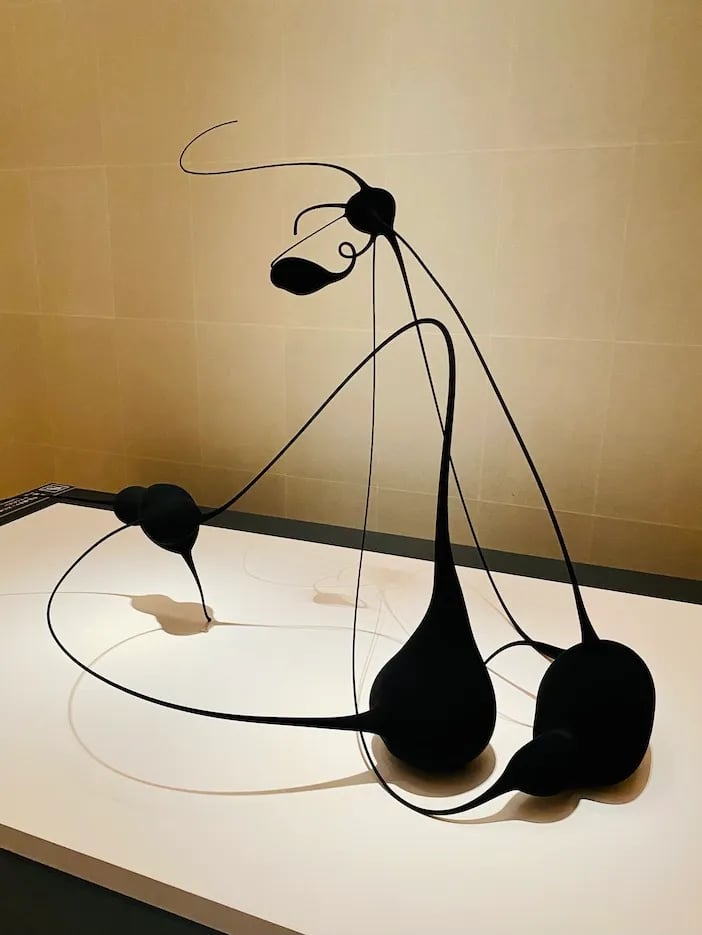
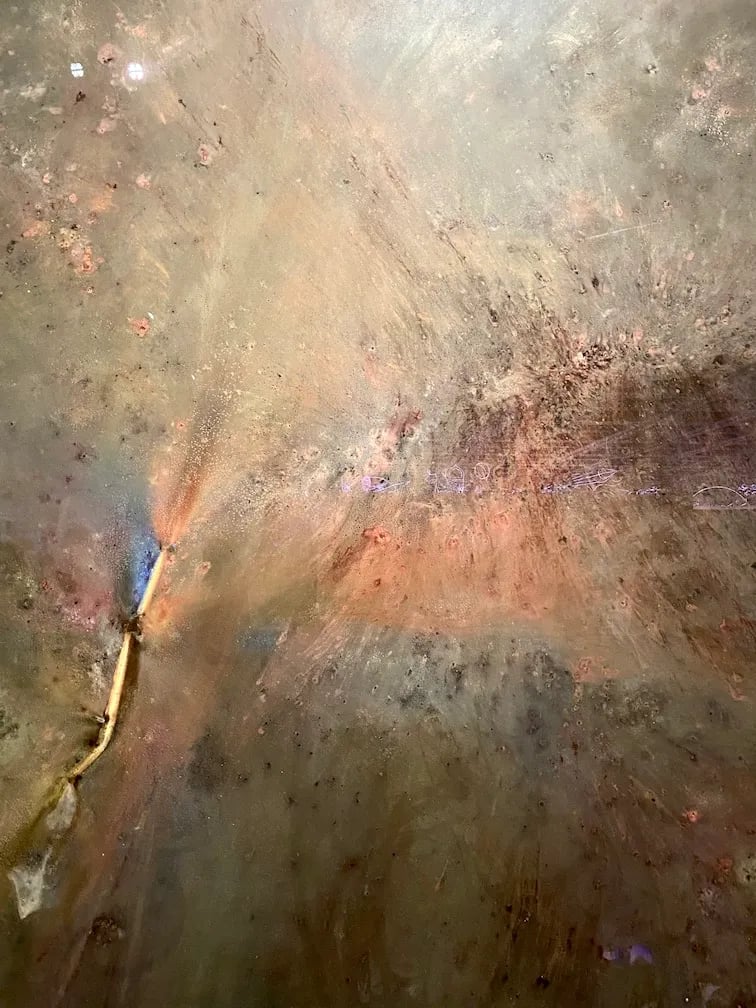
Here are some from the rest of the art museums I went to in Japan (these are unedited, so I don’t promise that they make sense haha):
Museum of Contemporary Art Tokyo
A place of belonging, a what could have been — perpetual outsider
What is art that defines a time and a generation
What does it mean to create post-data and post-AI?
Asian museums that dedicate whole rooms to western artists when western museums would rarely if ever do the same
RAGE: Who gets to define culture and what is worth showing? Who gets to deem another culture “inferior”?
Wind because it brings me back to different places, a rare feeling of belonging, nostalgia, what could have been
Wind bc it’s freedom
So what is water? Water is free but also restricted. But with enough patience it wears down all other obstacles
In Japan I really feel nature
Demolition and rebirth, what does it mean to have a physical place filled with memories be intentionally demolished?
The value of art is that it opens my eyes to the world and makes me slow down and take notice of what’s around me, how I’m feeling, how I’m reacting. It makes me more aware of being present and alive. There’s no “use”, just feeling.
When someone sat down with my work for 30min and just stared at it unprompted, and then told their friends about it to check out.
21_21 Design Sight
what is original, what has staying power? What is copied but can’t be fully emulated?
Furniture as a piece designed for personal interaction
“With the Times / Beyond the Times”
The way that light travels through materials
1960s: cynicism in design, that design is just a sales strategy. Where does my cynicism come from? Capitalism and consumerism?
Movement: small data, slow data
Sometimes originality shines through in the feel, movement, and mechanism
Slow data, small data
Creation Gallery G8
process as creation, taking time—slow data
Museum Of Modern Art, Tokyo
So interesting to see western styles with Japanese/Asian themes
There were two paintings depicting Japanese invasion of China in 1938-1941 and it made me feel sick, and I’m trying to reconcile where art lies in the context of war and harm done and the responsibility of cultural institutions in how they’re handled—esp if art is supposed to be the archive of the time, does it have responsibility to tell both sides of the story?
If art is an archive of a time, what is our responsibility as data artists? What information are we trying to archive for the future?
What questions am I trying to ask from this collection of modern art?
Fabric as feminine practice
Cai Guo-Qiang
fire as medium, performance art. Gunpowder, matchsticks
Filling up sketchbooks with revelations & ideas, how do I facilitate that for myself?
Sketchbooks that don’t have to be beautiful and perfect, that are just for myself
I’m on the cusp of figuring something out about myself and my art, and I feel like coming back to where I grew up is part of the answer.
Why do I make art? I want to be understood.
Ideas in reserve/back burner, waiting for the right opportunity
He has a documentary on Netflix about his sky ladder
His daytime fireworks are like paintings in the sky
A puff of white smoke as medium
I want to take a class in architectural design, and in fabric design
Keeping sketchbooks ana ideas and journals for decades and having them to revisit and reinvigorate new ideas into past themes
What does it look like to create for the social media generation, where ppl snap a photo and walk away? Do we use that to our advantage, do we demand their attention to stay?
Exploding between glass and mirror creates a magnificent sense of depth
The way the mirror oxidizes
“Return to Darkness” feels/looks like process of creation itself, all the more meaningful that is created with fire
Almost monochromatic but there’s still depth
Sanding glass to create pathways for water, that also affects the shadows the glass and water casts
Mirrored panels that look like screen dividers
Sometimes I feel like wild for, jumping from place to place, interesting to interest, profession to profession, restless and unsettled.
National Art Center Tokyo
I’m more and more fascinated by paintings from memory, they’re blurry and that’s the point—which really appeals to my shitty recall
The way that light filters through trees
Japanese ink paintings
Only two colors -> Masterful use of white space and empty space
The (almost) full list of art museums/galleries I visited
⭐️⭐️⭐️ = mind-blowing.
⭐️⭐️ = I’m glad I went.
⭐️ = there was art.
Note: this rating system is very highly subjective and is entirely based on how much it resonated with me personally.
Naoshima
⭐️⭐️ Benesse Art Museum
⭐️ Lee Ufan Museum
⭐️⭐️⭐️ Chichu Art Museum
⭐️⭐️ Art House Projects
⭐️⭐️ Ando Museum
⭐️⭐️⭐️ Teshima Art Museum
Kyoto
⭐️ The National Museum of Modern Art, Kyoto
Tokyo (+ Hakone)
⭐️ Hakone Glass Museum
⭐️⭐️ Museum of Contemporary Art Tokyo
⭐️ The Original @ 21_21 Design Sight
⭐️ Tokyo Shibuya Koen-dori Gallery
⭐️⭐️ Blown Glass Exhibit @ Suntory Art Museum
⭐️⭐️⭐️ Tomohiro Okazaki @ g8 Creation Gallery
⭐️ The National Museum of Modern Art, Tokyo
⭐️⭐️⭐️ Cai Guo-Qiang @ National Art Center Tokyo
A conclusion
In my last semester I took a class called “Writing the Artist Statement”, in which I was asked, “who are your art influences?”
For the life of me I couldn’t come up with a single name.
And that was when I realized that, growing up in America, I had only ever learned Western art history. But the classes were always just called “Art History”, implying that Western art history is art history (yay post-colonialism) and I had subconsciously dismissed all of my Chinese and Japanese art influences as “not legitimate” influences.
I am deeply influenced by the Chinese ink paintings my mom used to have in my childhood home, a set of four long scrolls that depicted the seasons. I’m inspired by the Miyazaki films I grew up with, the lush landscapes, his masterful use of pauses to set the tone or build tension. And I love the minimalism in Japanese design, the way they focus on beautiful, curving lines and organic shapes, and that they’re deeply inspired by nature.
I wrote in my notes that I feel like I’m on the cusp of figuring out something with my art, and I feel like coming back to where I grew up (in Japan) is part of the answer. That if I could just dedicate some time to studying Chinese and Japanese art, to trace their histories and learn their artists’ names, that I’d arrive fully at my own style.
That’s my short-term, next few years goal: to figure out a way to spend a longer period of time in Japan to study East Asian art history, with a concentration on the last 50 years and new media arts. And perhaps, someday, in China too.
If you know a way to make this happen—please let me know! I’m all ears and so interested.
